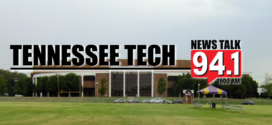Keeping your family safe from fires this winter can come down to proper installation and maintenance of your wood-burning stove and fireplace.
Local firefighter Rick Vlahos said one of the greatest dangers of a wood stove is failing to install it properly. Vlahos said that using the right type of wood in stoves and fireplaces is vital as well.
“Putting it in the right way is expensive,” Vlahos said. “People say, you know, I can use duct tape instead of this and it works better. The key is to get it installed properly. If it’s installed properly, I’ve got every confidence in the world that you won’t have any trouble from a safety side.”
Vhlaos said people can create fire risks when they cut corners on cost. Vlahos said before the winter starts and people start using fireplaces, they should have their chimneys swept and cleaned.
He said maintaining proper clearance is vital. Having any side of the stove too close to a wall is among the most common ways that people start fires with their stove.
Vlahos also said that failing to make sure the wood is dry enough before burning creates a fire hazard.
“What typically happens is, we have a storm that comes through and somebody has a tree that comes down in their front yard,” Vlahos said. “They want to cut it up and burn it. The problem is, it takes six months to a year after it’s split for that wood to dry out and burn properly.”
Vlahos said wood needs to dry out to 20 percent moisture content at most. That moisture most often takes the form of sap inside the wood. He said that the most dangerous part of burning wet wood is the possibility of creosote buildup in the chimney that can cause a chimney fire.
The National Fire Institute certifies wood stove installers and chimney sweeps. Tennessee does not require certification but Vlahos said that finding someone with that certification is ideal for those having a stove installed or a chimney cleaned in preparation for winter.
Vlahos also said when burning early in the winter, it is important to burn good hot fires. Until the top of the chimney is hotter than the room, the fireplace won’t draft properly and can become dangerous. Plenty of kindling or newspaper can be used to create a fire hot enough to heat the chimney. Vlahos said burning a fire from time to time in preparation for the winter is also important because it prevents creosote buildup.
“When we get those cold days where it’s 20, 25, 30 degrees outside, we need to heat up that whole column of air before it’s going to burn properly,” Vlahos said. “Once you heat that whole column of air, you can cut the air down and control the fire. But in the early stages, you want to get a good hot fire going.”
Vhlaos served as former Executive of the National Fireplace Institute.
 News Talk 94.1/AM 1600 Where The Upper Cumberland Talks
News Talk 94.1/AM 1600 Where The Upper Cumberland Talks







